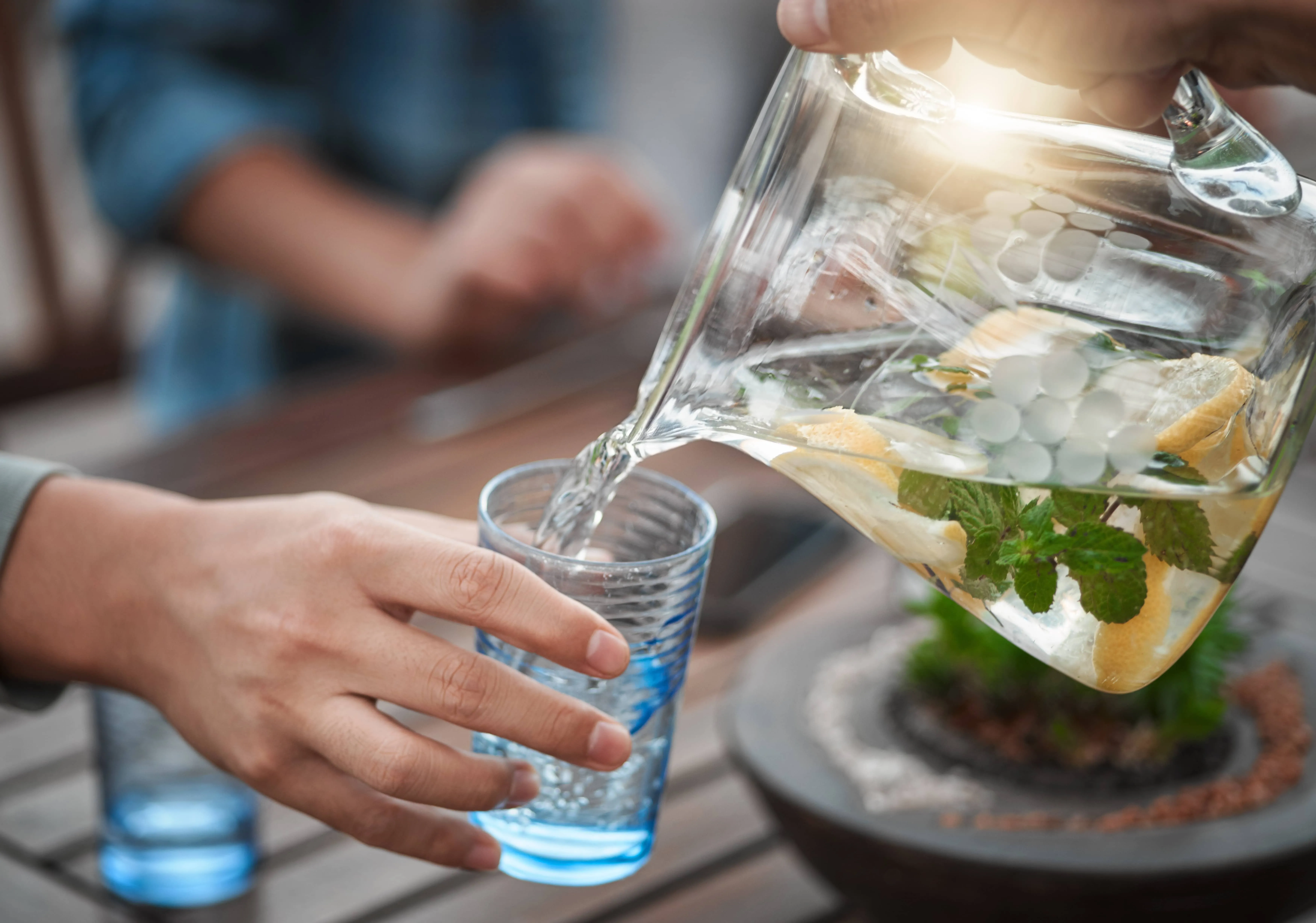Staying hydrated is crucial for regulating glucose levels and promoting overall health and well-being. Drinking water is one way to support hydration, but it isn’t dependent solely on your water intake. Certain water-rich foods can help you stay hydrated while also offering antioxidants and fiber that support steady glucose levels. Continue reading to discover which foods offer hydration and support glucose control.
Why Hydration Matters for Glucose Management
Your body runs on water as much as it runs on fuel. When you’re low on fluids, it’s not just thirst you feel; your glucose levels can feel it too. Dehydration reduces the water in your blood, concentrating glucose and making levels climb. Over time, even mild dehydration can make your cells less responsive to insulin, which means glucose hangs around in your bloodstream longer than it should.
Water also helps your kidneys do their job: flushing out excess glucose and keeping your fluid balance in check.1 When you’re well-hydrated, that system runs smoothly. But when you’re running dry, your kidneys have to work harder, which can make managing glucose trickier, especially if you have insulin resistance or type 2 diabetes.
Bottom line: staying hydrated isn’t just about quenching thirst; it’s a simple, daily tool to help your body keep glucose in balance.
Top Hydrating Foods That Support Glycemic Control

Many foods naturally contain a high water content, along with nutrients that help maintain steady glucose levels. Incorporating these options into your routine can help you maintain fluid balance and promote better glucose control. Here are 6 hydrating foods that deliver both metabolic and hydration benefits.
Cucumbers (95–97% water)
Crisp, refreshing, and low in carbohydrates, cucumbers are an easy way to boost hydration without affecting blood sugar. They also provide fiber, which helps slow digestion and support glucose stability.
Okra (93% water)
Okra has a high soluble fiber content, which allows it to form a gel-like substance in the digestive tract that can help slow down glucose absorption. Add this glucose-friendly vegetable to salads, soups, or stews for a boost of hydration.
Watermelon (91–92% water)
While watermelon contains natural sugars, its high water content and antioxidants, such as lycopene, make it a hydrating and nutrient-rich choice. When enjoyed in moderate portions alongside protein or healthy fats, watermelon can fit into a balanced diet that supports healthy blood sugar levels.
Grapefruit (90% water)
This tart and juicy fruit provides hydration along with potassium and fiber, two nutrients that contribute to glucose control. It’s also lower in sugar than some other fruits, offering a refreshing option with metabolic benefits.
Strawberries (91–92% water)
Strawberries are not only hydrating—they’re also rich in fiber and antioxidants that support glucose balance. Their natural sweetness makes them a satisfying snack or addition to meals without the glucose spike.
Plain Greek Yogurt (80% water)
While not a fruit or vegetable, plain Greek yogurt provides hydration along with high-quality protein and probiotics. Both protein and probiotics play a role in supporting glucose metabolism. It’s a versatile and nutrient-dense choice for meals or snacks.
Other Water-Rich Vegetables & Fruits to Include
Beyond these top picks, numerous other fruits and vegetables provide hydration while offering fiber, vitamins, and minerals to support glucose control. Many of these foods are naturally low in carbohydrates and have a minimal impact on glucose levels, making them a good choice for maintaining metabolic health.
Zucchini, celery, tomatoes, lettuce, bell peppers, and spinach all contain high amounts of water (ranging from around 90% to 95%) in addition to key nutrients like potassium, vitamin C, and antioxidants. Whether added to salads, blended into smoothies, or served as snacks with a protein-rich dip, these water-rich vegetables help you stay hydrated and support overall metabolic health without spiking your blood sugar.
Practical Ways to Add Hydrating Foods to Your Diet

Incorporating hydrating, glucose-friendly foods into your daily routine doesn’t have to be complicated. Here are some easy, practical ways to add more of these foods to your plate:
- Snack smarter. Keep it simple with cucumber slices paired with hummus or a yogurt-based dip. This combination provides hydration, fiber, protein, and healthy fats to help curb hunger and support stable blood sugar levels.
- Build a smoothie bowl. Use watermelon or strawberries as a hydrating base, blended with plain Greek yogurt for added protein. Top with chia seeds or nuts for a satisfying crunch and healthy fats.
- Make veggie-packed bowls. Combine crisp lettuce, juicy tomatoes, bell peppers, and cucumbers to create a refreshing salad that’s both hydrating and packed with nutrients. Pair it with a lean protein, like grilled chicken or salmon, for a well-balanced meal.
- Cool off with chilled soups. Try a vegetable-based soup, such as gazpacho, which incorporates hydrating ingredients like celery, cucumber, and tomato. It’s an easy way to boost your vegetable intake and increase hydration, especially during the hot summer months.
- Start your day with a yogurt parfait. Layer plain Greek yogurt with fresh berries and chia seeds for a satisfying and hydrating breakfast that delivers protein, fiber, and healthy fats, an essential combination for glucose control.
Food Pairings That Support Glucose Stability
What you eat matters, but how you combine foods can make an even bigger impact on your glucose response. Hydrating fruits, for example, are a great source of natural carbs, but pairing them with protein or healthy fats can slow digestion and help prevent sharp glucose spikes. Think crisp apple slices with a handful of almonds, or a cucumber-tomato salad topped with creamy avocado.
If you use a continuous glucose monitor (CGM), you can see exactly how these pairings affect your body. Everyone’s glucose response is unique, so experimenting with combinations can help you find the balance that keeps your energy steady and your metabolism on track.
Daily Habits That Make a Difference

Hydration and glucose control go hand-in-hand, and both are easier to maintain with consistent daily habits. A good starting point is to aim for about half your body weight in fluid ounces of water each day. Mix it up with hydrating foods like vegetable-rich soups, smoothies, and fresh salads to help you reach your goal.
Pay extra attention to your hydration on hot days or when you’re more active; both heat and exercise can increase fluid loss and influence your glucose levels. Using your CGM to track changes can help you spot patterns and make small, informed adjustments that keep you feeling your best.
Bottom Line
Hydration isn’t just about quenching thirst; it’s a powerful tool for steady glucose and overall metabolic health. Fill your plate with water-rich, nutrient-dense foods like cucumbers, strawberries, okra, and plain Greek yogurt, and pair them with protein or healthy fats for optimal balance. With mindful eating, smart pairings, and consistent hydration, you can help your body maintain stability, energy, and resilience, meal after meal.
Learn More With Signos’ Expert Advice
Understanding your body’s glucose response can help you make intentional choices that improve your health. With Signos, you can monitor your glucose levels and receive personalized insights to support informed decisions that improve your health. Want to dive deeper? Learn more about why glucose is so important.
Topics discussed in this article:
References
1. Ogobuiro I, Tuma F. Physiology, Renal. [Updated 2023 Jul 24]. In: StatPearls [Internet]. Treasure Island (FL): StatPearls Publishing; 2025 Jan-. Available from: https://www.ncbi.nlm.nih.gov/books/NBK538339/




.svg)









.webp)
.svg)
.svg)
.svg)
.svg)
.svg)
.svg)
.svg)
